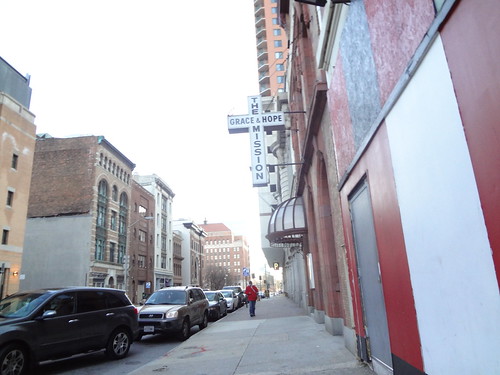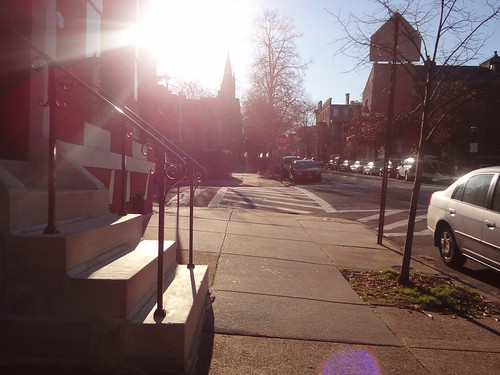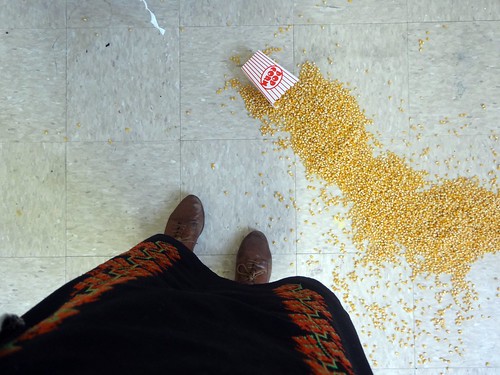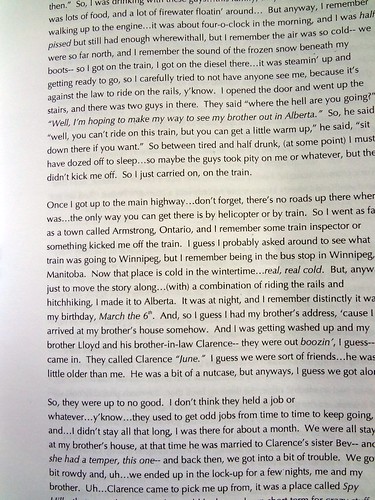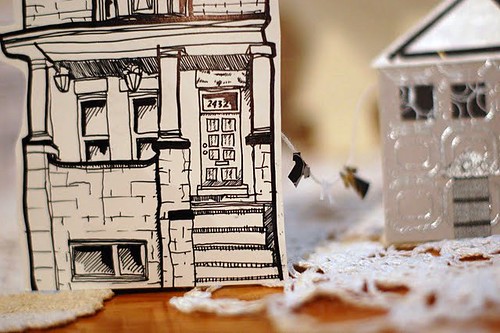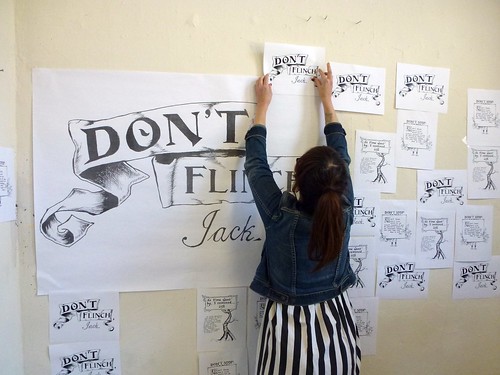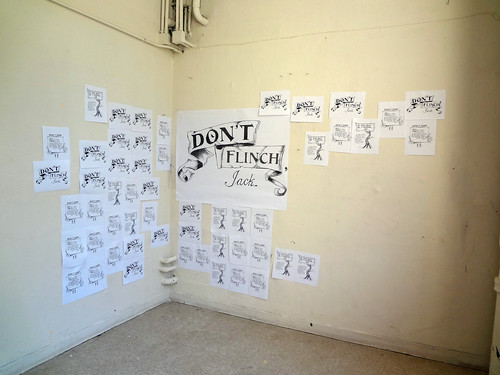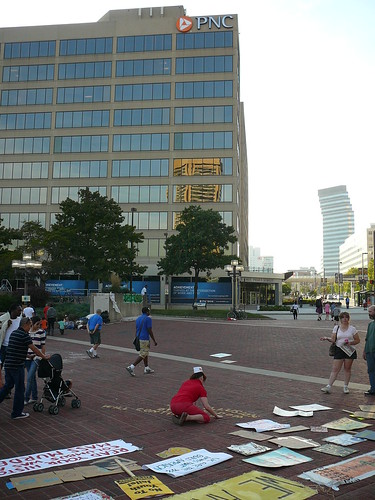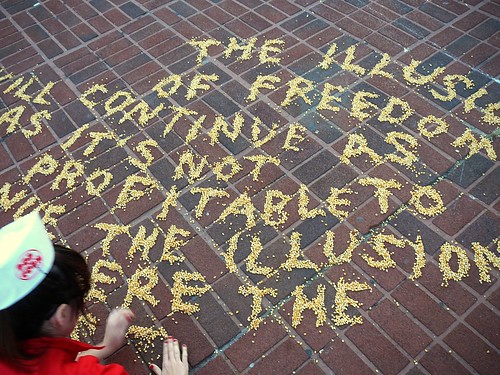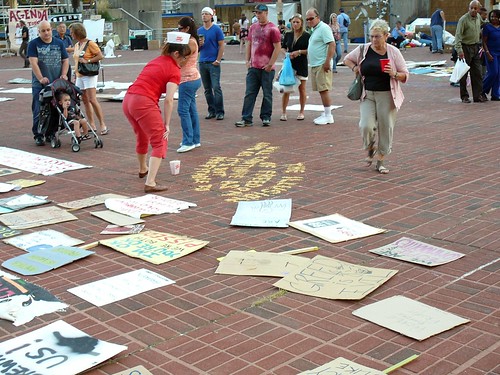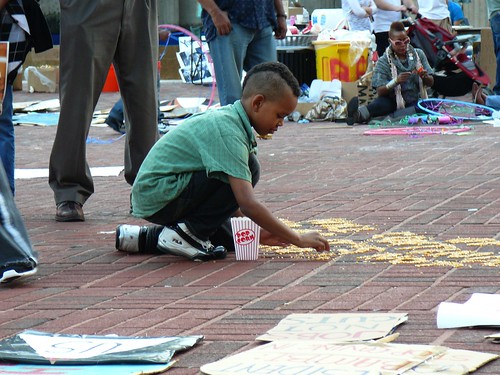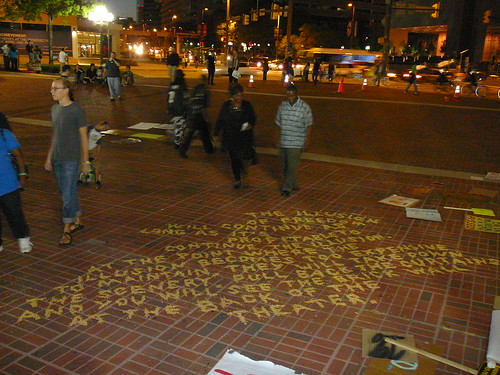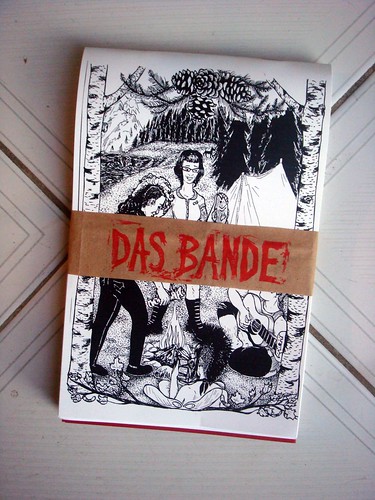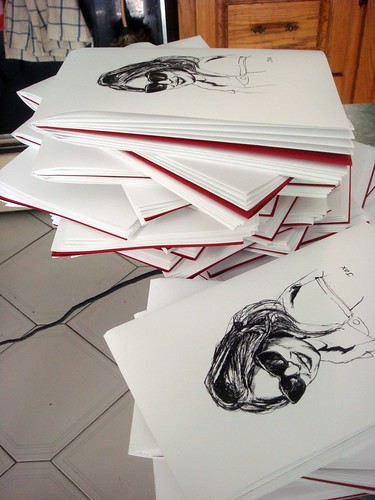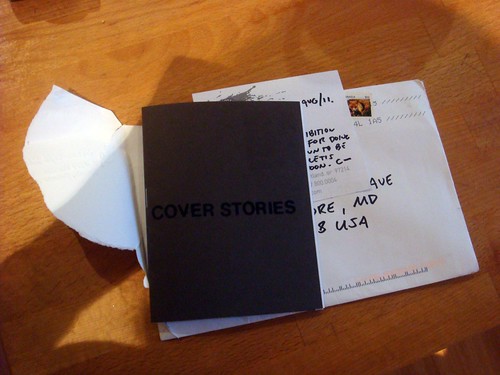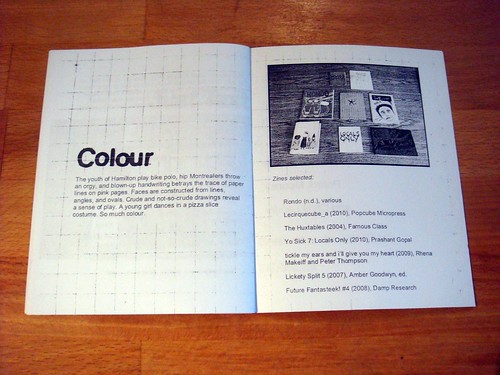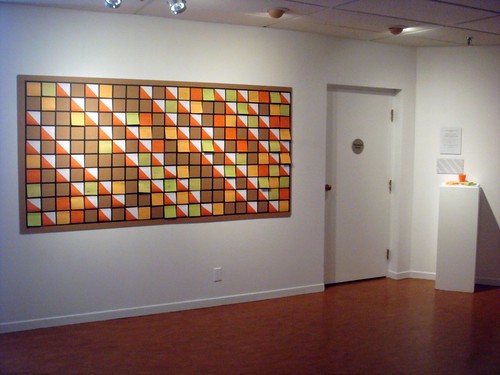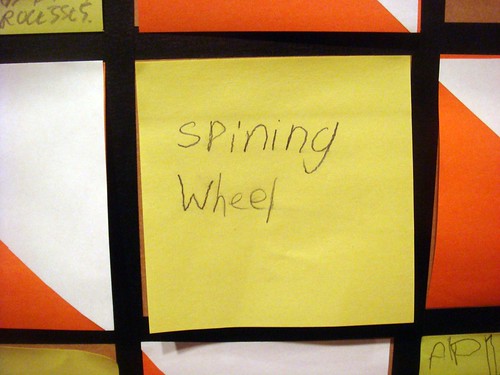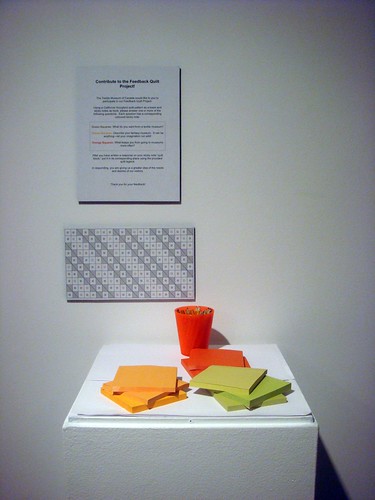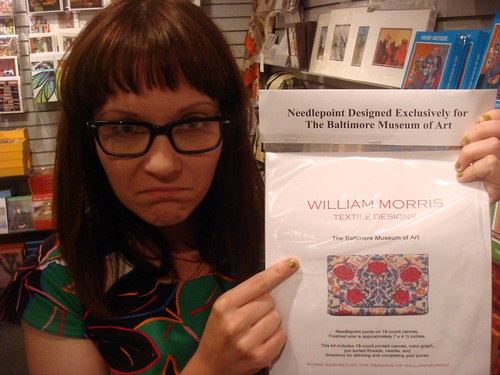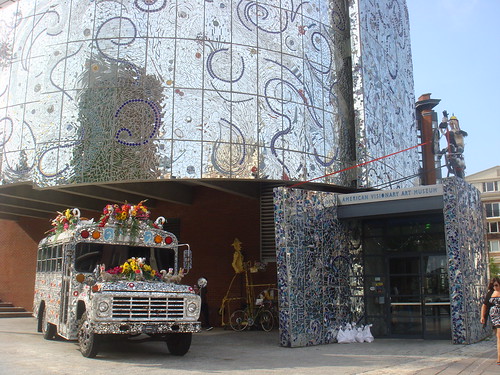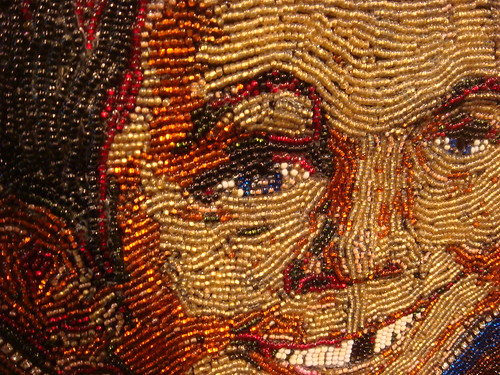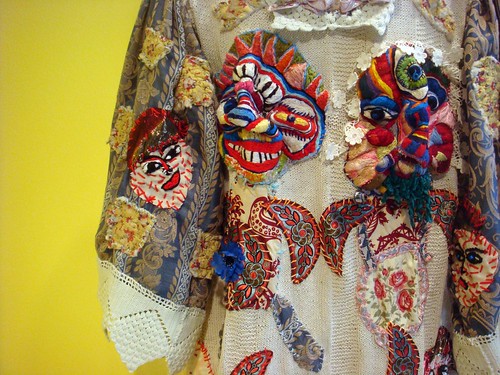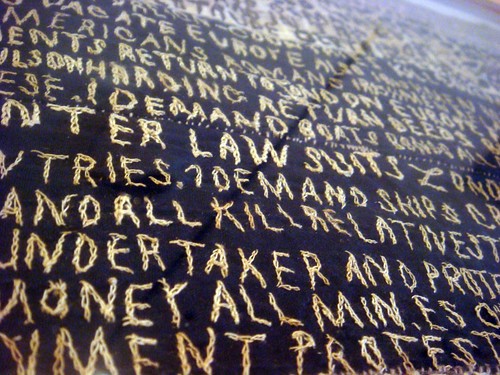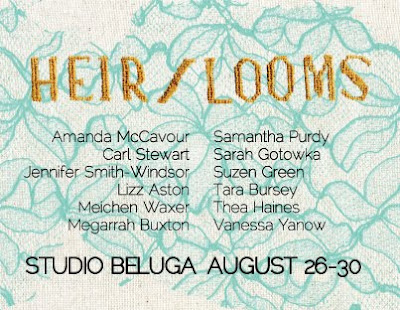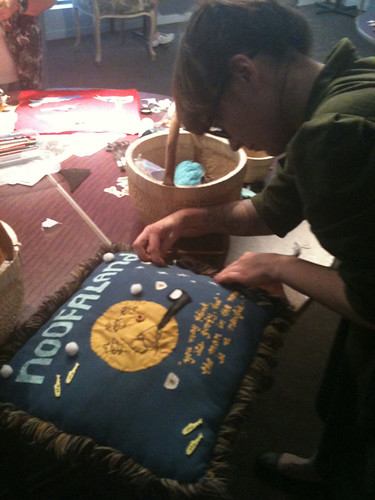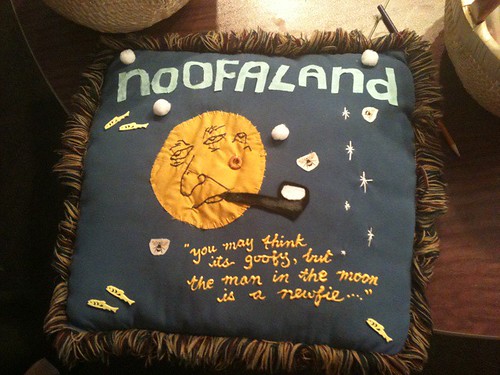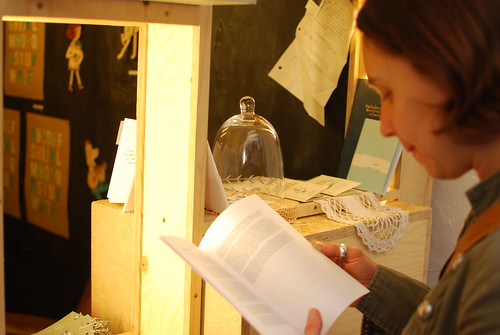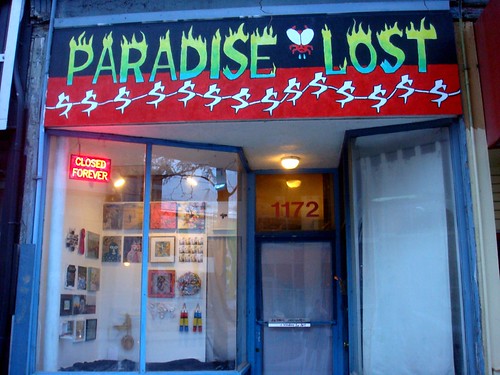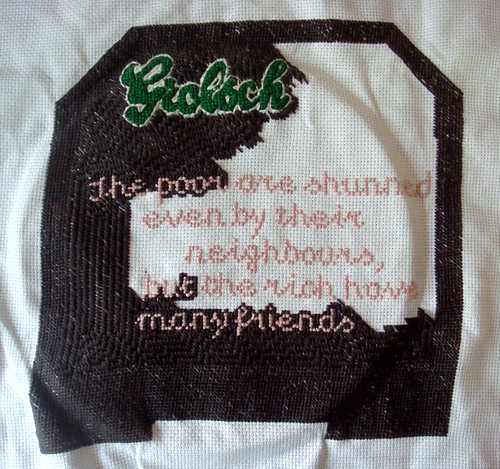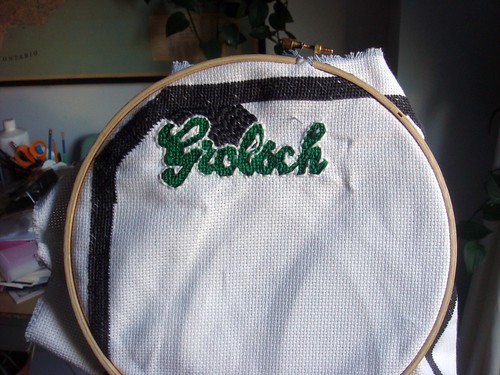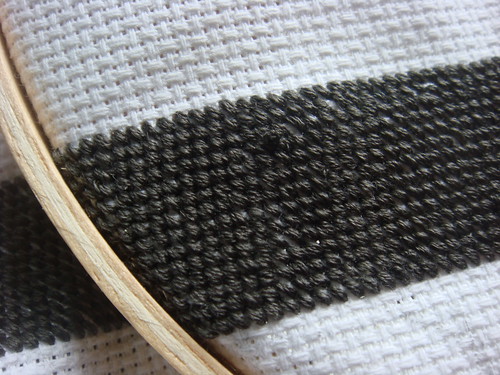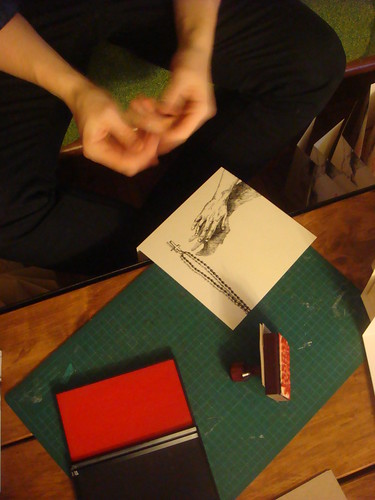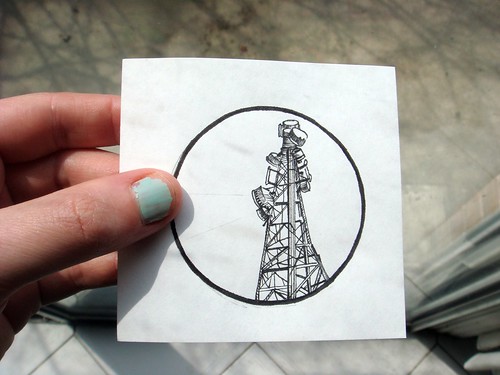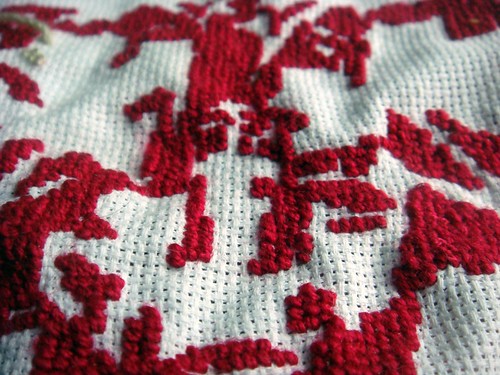
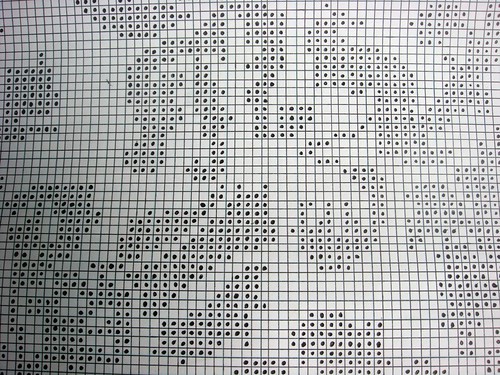
Last week, my project
Crossed Stitches was included in the exhibition
Heir/looms, curated by Nicole Dawkins for
Studio Beluga in Montreal. The exhibition seems to have gone off without a hitch...congratulations Nicole, and thanks so much for including me!
A really gorgeous and engrossing catalogue accompanied the exhibition, packed with artist interviews, images and multiple exhibition essays. It was a real honour to be included in it. The catalogue is a super limited edition, so I thought I'd include my complete catalogue interview and artists statement here for anyone who is interested in me nattering on and on about myself and my family...
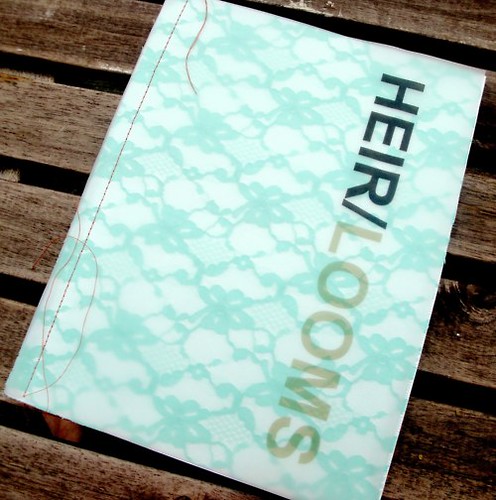
How much can we really claim to “own” our ideas? The repeating, reworking and re-contextualizing of ideas from the past is part of the postmodern condition. So many ideas have come to fruition over the course of history-- when we make something, what are the odds that it hasn’t been made before? Anyone who has come across the work of another artist that is uncannily similar to their own knows what it means to have their sense of ownership over an idea thwarted. Perhaps the solution to this dilemma is to forfeit ownership altogether.
My piece, Crossed Stitches, explores these ideas. Focussing on a wallpaper design by William Morris-- a designer whose level of influence cannot be overestimated-- I went through the painstaking process of creating an accurate and fully-functional cross-stitch pattern that corresponds to his original design. This process involved transferring each design onto a large grid and translating each pattern so that it is comprised of squares on a grid. These large-scale grid drawings were then used to make a cross-stitch pattern on another piece of grid paper, dividing the colours of the pattern into symbols as “real” cross-stitch patterns do. This final pattern was then included in hand-made cross-stitch kits, so people can make their own William Morris “fabric swatches.”
Crossed Stitches has been paired with an embroidered piece by my mother, created for me in 1989 from a commercial cross-stitch pattern from a book called Patterns From the Past. Both pieces represent different views on the issues of authorship and authenticity.
How did you come to work with fibre-based materials?
When I think back to the very first pieces of sculptural work I made as a student long ago, I remember using materials that weren't "artists" materials, probably because I wanted to make the work that I was envisioning without having the equipment, or the technical know-how attached to sculptural materials such as clay and plaster. I remember making sculptures out of crumpled up tin foil, ceramic tiles, coffee filters, paper-- materials that are very rooted in the domestic and "every day." Early on, I was inspired by artists like
Robert Rauschenberg (still one of my very favourite artists), and I think this work was partially inspired by artists like him who worked with simple, cheap found materials poached from every day life. Then about 6 or 7 years ago I made a leap from attempting to make art that was like pure sculpture to making work involving garments. I would buy used garments and speculate who the owner used to be, and how the garment might be a reflection of who that person was and what they did with their lives. I would sometimes attach used garments to found old photos and create narratives with installations centred around the found garment. While this body of work didn't last long I consider it my first serious body of work, and it definitely set the stones for a long-standing interest in garments, textiles and fibre art which has been a part of my work to varying degrees for quite a while now.
How does the materiality and practices of working with your chosen medium affect the conceptual focus of your work?
I work in many different media. Generally I will get an idea for work, and will work in whatever medium I have to to get the work done, whether it be a drawing with ink, needlepoint or a sculpture made out of miniature shrimp that is inspired by lace. Sometimes the concept informs the choice of material, and sometimes an experiment with an interesting material will lead to a concept that is linked to what the materials are "doing" or can do. Both material and concept are very important and inextricably linked in my work. The
Crossed Stitches work is a good example of this.
How or where did you learn to stitch or sew?
My grandmother taught me to crochet and my mother taught me needlepoint. I remember being about 8 or 9, spending a ton of time doing both. I didn't keep up with either craft, but picked them both up later in life as part of my art practice.
Is there a tradition of craft/making in your family?
Definitely. Growing up, I had a great deal of contact with my mother's side of the family, who are Macedonian. The main form of craft that my family engaged in was crochet. My grandmother crocheted these sock-like slippers for my mother, her sisters and all of my cousins (and I) every winter for most of her/our life. She even crocheted me a bra for one of my dolls once...!!!! Recently, my mother must have been having a particularly sentimental day (!) because she showed me a huge bin full of crocheted baby clothed and blankets that my grandmother, other relatives, and her old co-workers made me when I was a baby. My mind was blown and I was very humbled by the incredible skill and patience used in the making of these objects. As my mother pulled miniature sweater after miniature sweater made by many different people, I was amazed to recognize my grandmother's work immediately. The crocheted items she made were simpler, less decorative and more utilitarian than the rest of the baby clothes. My mother showed me a baby blanket my grandmother crocheted that was incredibly beautiful in it's simplicity. My mother said something along the lines of "your grandmother made that when they didn't have any money at all. She would just work and work on that blanket." That is the thing that I appreciate the most about the items crocheted items I've come across made by my grandmother and other family and people around me growing up. Many of these people didn't have much money, but they always found something to give...they were so generous. Usually these things were hand-made-- clothing, food, and things like that.
Interestingly, the side of my family that I don't have a lot of contact with-- the family from Newfoundland-- are even bigger makers than my Macedonian family. The culture of making and crafting in Newfoundland is such a rich one. This is something I'm starting to learn a bit about, and would love to learn about more in the future.
How does this affect your relationship to these materials and practices?
I don't know how much it directly affects the work that I've done with craft materials. One thing that comes to mind immediately is that members of my family-- my mother for example-- who don't necessarily have a understanding of conceptual or contemporary art can relate to work that I've done that somehow employs the use of craft materials and processes. These materials and processes are accessible and easy to identify, thus opening up lines of communication and dialogue about the work. I really like that this is the case, because non-artists are generally very afraid to talk about art. I want such people to feel like they can take something from art...conceptual art, too. What is the point of making artwork that only other artists will look at?
How is your personal, family or cultural history reflected (or challenged/deconstructed) in your work?
One thing I can identify in my work that reflects my upbringing is a sense of work and perseverance. I hope this doesn't come across as hokey, because it's totally true. I come from a stubbornly hard-working, blue collar family. Sometimes I feel like if a piece of work isn't hard to construct or doesn't take a million hours to make, it isn't worth doing. I love labour-intensive processes, and maybe subconsciously feel like work that is difficult or laborious will be appreciated more, or is more valid somehow. I should probably get over this!
Is the history of craftmaking or domestic arts important to your practice and to your work?
The history of craftmaking and domestic arts actually aren't really all that important to my art practice. I am interested in materials and processes in general. Sometimes a process or a material will resonate with me, and it will find its way into my work somehow, either intentionally or unintentionally. I can see myself delving more into craft history in the future, but right now I approach craft mainly from a very visceral connection to making, creating, building and using my hands. I am interested far less in the historical domestic arts as I am in contemporary notions of crafting as an alternative to buying, it's ties to the do-it-yourself ethic, and the psychic rewards of doing slow work. Sometimes crafting feels like the only antidote to aspects of contemporary life that can be overwhelming or frustrating-- omnipresent technology, advertising, consumerism, rude people, crowded subways, etc.
How do you imagine your work will be positioned and passed on by future generations?
I imagine that some of my work will be mistaken for garbage and thrown out! Seriously! That is why I document the hell out of my work, and write a fair bit about it. I want future generations to know that these strange things I've done-- with food, paper, and fragile materials in particular-- weren't just the product of a crazy person! It all took a fair bit of time and thought, and occasionally people found it interesting...ha, ha!

